Nanjing Cloud Brocade (云锦, Yunjin) is a traditional Chinese silk craft that dates back to 417 and has a history of 1,600 years, known as "inch of brocade, inch of gold".
Today, the traditional characteristics and unique skills of cloud brocade are still maintained, and the traditional jacquard wooden machine weaving has been retained.
This traditional hand weaving technique, which relies on human memory to weave, still cannot be replaced by modern machines.
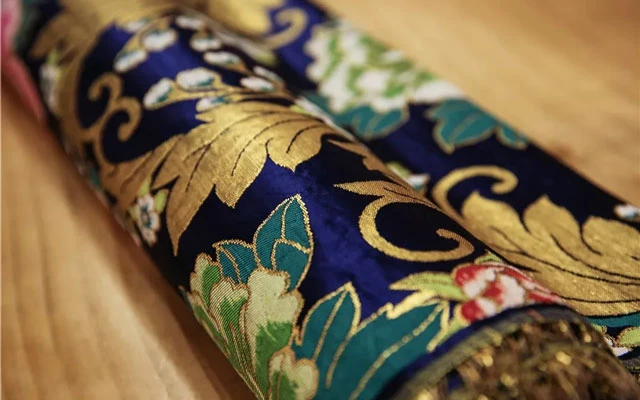
In the ancient silk fabric, "brocade (Jin, 锦)" is the fabric representing the highest level of technology.
The three famous Chinese brocades are cloud brocade, Shu brocade (蜀锦), and Song brocade (宋锦), and Nanjing cloud brocade is a collection of the art of weaving silk craft of all generations, ranking the first, represents the highest achievement of Chinese silk weaving, and is the brilliant crystallization of Chinese silk culture.
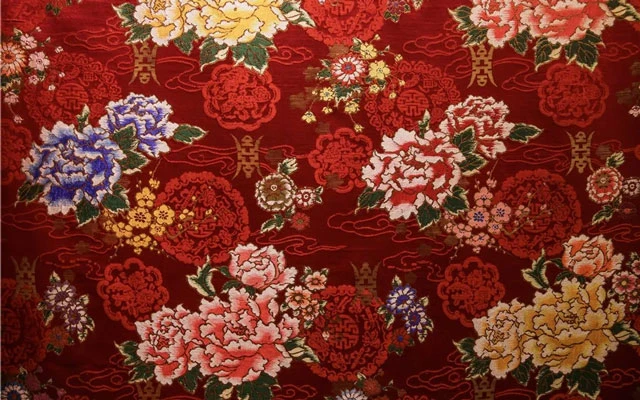
This article will share the history, characteristics of Chinese silk crafts: the Nanjing Yun brocade.
History of Nanjing Cloud Brocade
At the end of the Eastern Jin Dynasty, Liu Yu destroyed the Later Qin and moved the craftsmen workers to Nanjing, where advanced production techniques were brought to the south from Xi'an and the silk weaving industry developed rapidly.
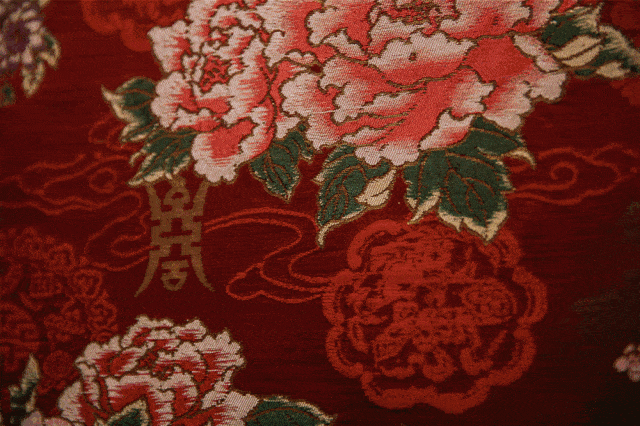
The common pattern formats of cloud brocade include group flower, scattered flower, full flower, twisted branch, folded branch, bat, peony, fish, pomegranate, peach, dragon, phoenix, unicorn, river & cliff, sea, Ruyi cloud (如意云) and so on.
In the 13th year of the Eastern Jin Dynasty (417), the court set up a brocade office near the banks of the Qinhuai River, marking the official birth of cloud brocade. In this way, the silk weaving industry in Nanjing has a history of 1600 years.
In the Yuan Dynasty, the Mongolians were very interested in gold-decorated fabrics and they used real gold to decorate official clothes, making the "gold woven with silver" cloud brocade stand out.
Kublai, the founder of the Yuan Dynasty, set up the "East and West Weaving and Dyeing Bureau" in Nanjing, which specialized in weaving satin and silk for the royal family and the officials of the Yuan Dynasty.
The Ming and Qing dynasties inherited the traditions of the Yuan dynasty and established government-run weaving institutions in Nanjing.
In the skills, the Ming dynasty developed the "Zhuanghua (妆花)" weaving techniques, and will be used to yarn, Luo (罗), Chou (绸), Juan (绢), Rong (绒) and other different textures of fabrics. The emperor a dragon robe, the basic time to spend two years.
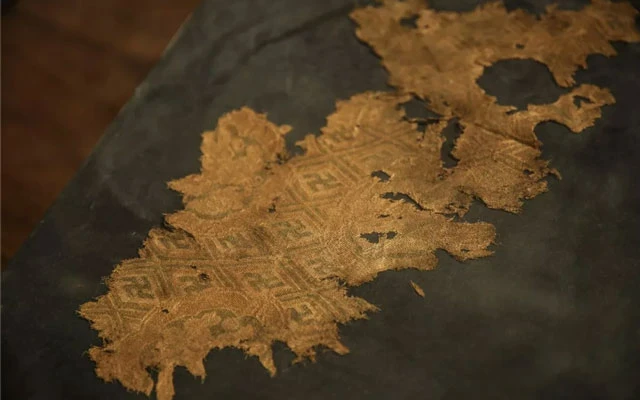
Ancient cloud brocade fragments
In the Qing dynasty, the Nanjing cloud brocade industry developed to the peak, the government set up in Nanjing Jiangning weaving bureau, the focus of weaving is basically high-grade fabrics, is the main weaving department of the imperial satin.
At the same time, the private weaving industry was not idle. According to some sources, when the silk weaving industry was booming, more than 300,000 people in Nanjing made a living in silk-related industries, producing millions of pieces of brocade annually, creating the largest handicraft industry in Nanjing at that time.
Nanjing cloud brocade is also called " Tian Yi (天衣)", which was made for the emperors, empresses, and royalty, so it naturally has a distinctive cultural imprint of the court.
The layout of the pattern is full and rich, with large blocks of yellow, red, and blue clashing together in glorious golden color.
Why is Nanjing Cloud Brocade precious?
Cloud brocade is divided into four categories: Zhijin (织金), Kujin (库锦), Kuduan(库缎), and Zhuanghua(妆花), the first three of which can be produced by modern machines, while "Zhuanghua", the most colorful of the cloud brocade fabrics, is a unique weaving technique that still cannot be replaced by modern machines.
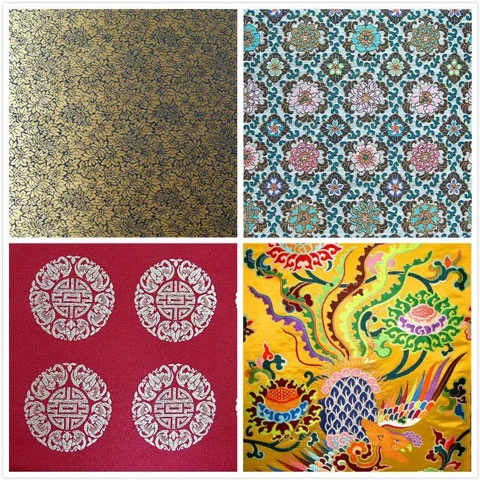
The upper left is "Zhijin", the upper right is "Kujin", the lower left is "Kuduan", and the lower right is "Zhuanghua"
The first is because of the delicate raw materials, "Zhuanghua" is a lot of peacock feather thread and flat gold thread, the former is a bird's feather, the latter is twisted with special paper and gold foil into a thread, which is difficult to control the strength and easy to tear the thread.
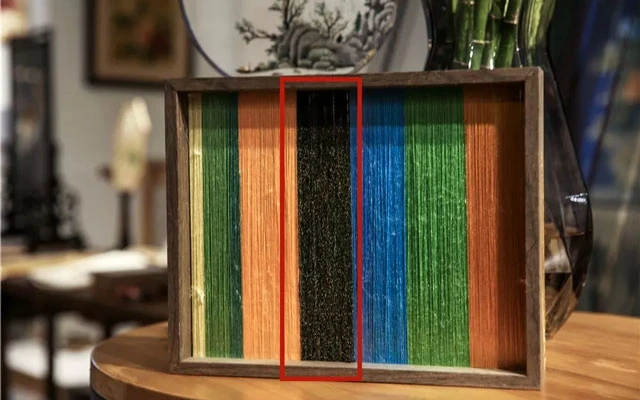
The red border is the peacock feather line
The second is because of the unique weaving process - different color by pattern (also called through warp and broken weft), which explains why cloud brocade can be so colorful.
When weaving, the warp threads are woven through the entire width of the fabric, while the weft threads are interwoven with the warp threads according to the pattern, but not through the entire width.
In other words, it is according to the color of the pattern, change color to replace a color shuttle. The pattern is made by interweaving different colors of silk shuttles back and forth, so you can see a lot of "broken" threads on the back of the brocade.
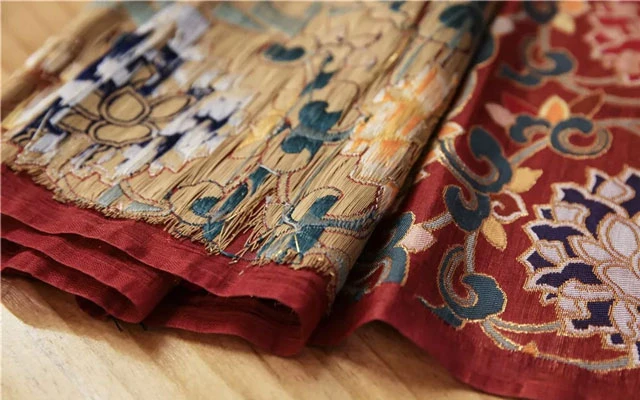
The back of the cloud brocade
The story of the replica of the dragon robe
In 1958, when the Dingling relics were unearthed, the dragon robe of the Wanli Emperor was in the limelight.
After the unearthing, the dragon robe was carbonized within a short period of time, and the past color was almost unrecognizable, with some places still torn.
Later, cultural relics experts in these dragon robe material, find it out of Jiangnan weaving, determine the dragon robe material is the pinnacle of Nanjing cloud brocade.
So the work of replicating the dragon robe fell on the Nanjing cloud brocade Research Institute (the only professional research institute of cloud brocade in China).
How difficult was the replica work? The dragon robe used a lot of gold thread and peacock feathers.
- first of all, the gold block is made into gold foil;
- two people sit opposite each other and take turns to lift the hammer, after more than 30,000 strokes, turning a thick piece of gold into light as a feather gold foil;
- then the gold foil is glued on a special paper, pressed and polished;
- and finally cut into strips, peeled out the gold thread, and twisted into gold thread by intertwining with silkworms.
As for the peacock feathers, from Yunnan and other places to collect the feathers dropped by peacocks and then take the feathers back to Nanjing, twisted into thread by hand, the whole dragon robe replica required peacock silk thread up to more than 300 meters.
In 1984, it took 5 years to copy the Wanli emperor's dragon robe finally complete, the original appearance of the heirloom rare reappear.
A lifetime of obsession with good craftsmanship
The production process of a piece of cloud brocade, from pattern design to the final woven product, is extremely complicated. To summarize, there are five main parts, namely pattern design, pattern knotting (Tiao Hua Jie Ben, 挑花结本), Zao Ji (造机), raw material preparation, and weaving.
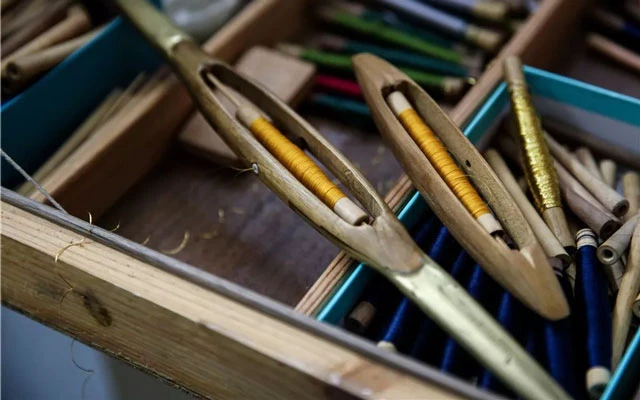
Wood Shuttle
- Pattern design: To weave a pattern, first of all, must enlarge the small picture into a large picture, and then fill in the color, and then hit a small grid on the pattern, known as the Yi Jiang Ben (意匠本).
- Tiao Hua Jie Ben: the pattern is knotted into a ball of yarn by using knotting notation, a process much like computer programming.
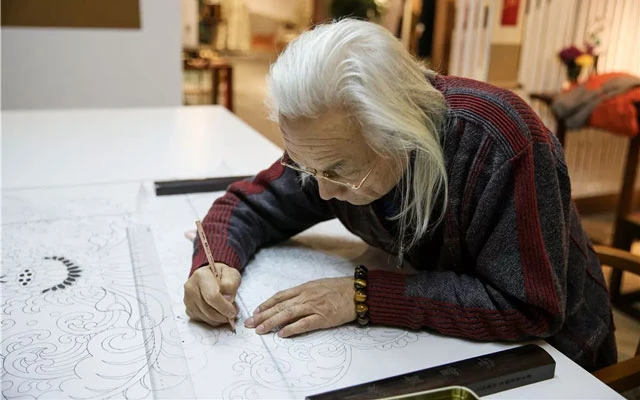
National-level intangible cultural heritage: Nanjing Yunjin traditional jacquard wooden machine, hand weaving technique inheritor - Guo Jun
- Prepare the raw materials: The main raw materials of cloud brocade are silk and gold and silver threads, and various bird and animal feathers such as peacock feather threads are also needed according to the pattern.
The production process of Nanjing Yunjin:
The Zao Ji and the weaving cannot be done without the traditional jacquard wooden machine, and it is considered a "living fossil" of ancient brocade weaving. Zao Ji is installing the required warp yarn on the loom.
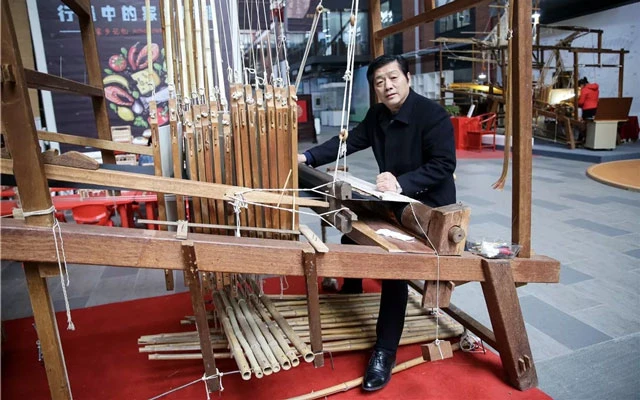
National-level intangible cultural heritage: Nanjing Yunjin traditional jacquard wooden machine, hand weaving technique inheritor - Zhou Shuangxi
When weaving, two people work together on the loom, the one upstairs raises the warp according to the requirements of the pattern; the weaver downstairs processes the pattern on the woven material and throws the shuttle to weave the weft.
The completion of a weft requires a small weft tube many times alternately woven, free to change color, the process is very complex, up and down two people to cooperate, a day can weave 5-6 cm, so the cloud brocade has "inch of brocade, inch of gold." said.
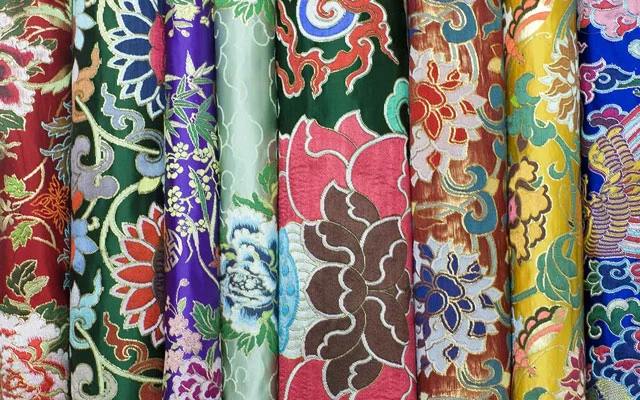
Cloud brocade fabric
Zhou Shuangxi said that some people liken "Tiao Hua Jie Ben" to a computer's "binary" algorithm.
The painter is the product designer, the "Tiao Hua Jie Ben" craftsman is the programmer, the weaver runs the program, and the loom is the "3D" printer.
Weavers to "print" out the emperor's dragon robe, need to run "Tiao Hua Jie Ben" coded more than 1 million programs.
Looking at the white-haired Mr. Guo Jun concentrating on drawing the pattern, you may ask, is there any point in these old crafts? "It keeps people's enthusiasm and inspiration for creation." Guo Jun, who is in his 70s, said that he has been a craftsman for more than 40 years and has chosen one thing to do for the rest of his life.
Machinery is cold, handicrafts are warm. This temperature is not only reflected in the transmission of the creator's heart and hands as one, but also in the divine communication between the creator and the user, which is almost heartfelt.
More about Chinese silk & patterns:
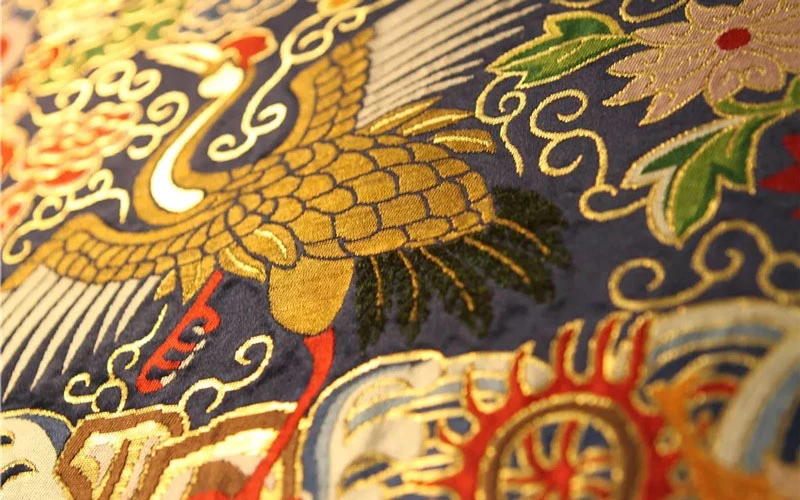

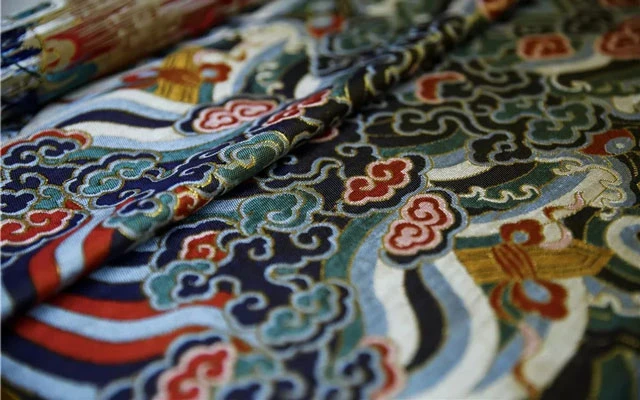
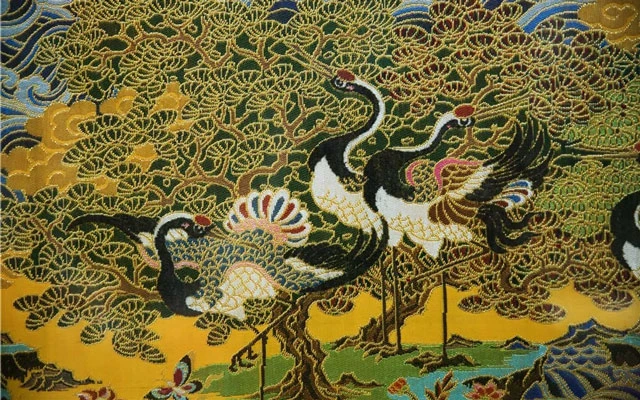
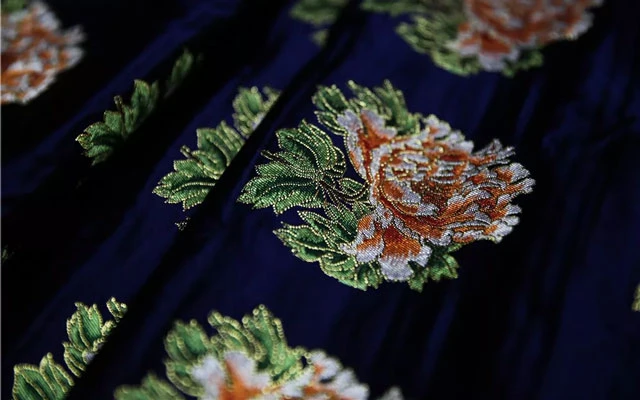
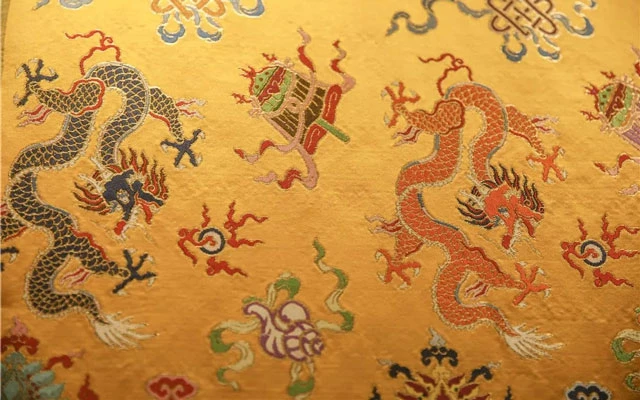
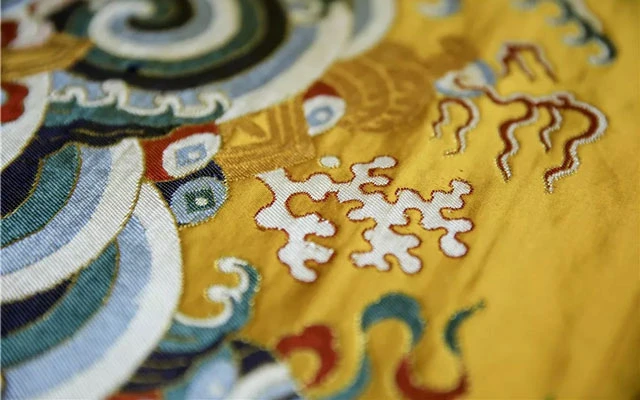

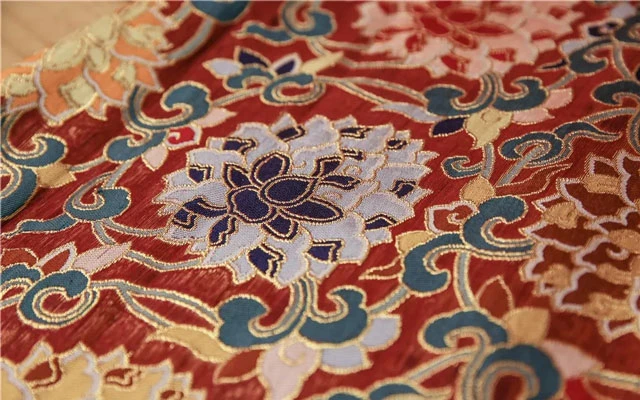

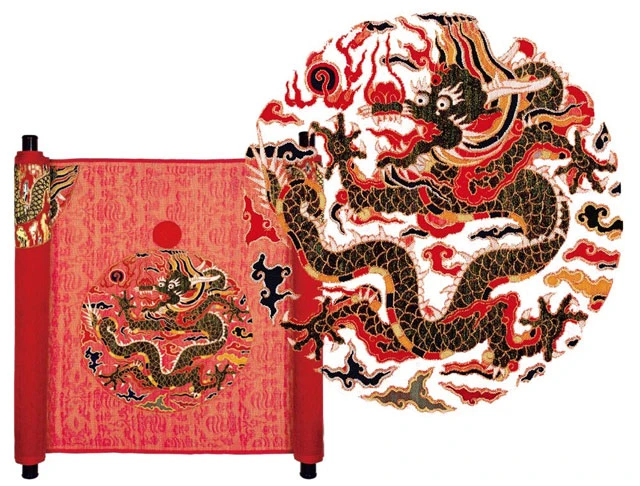

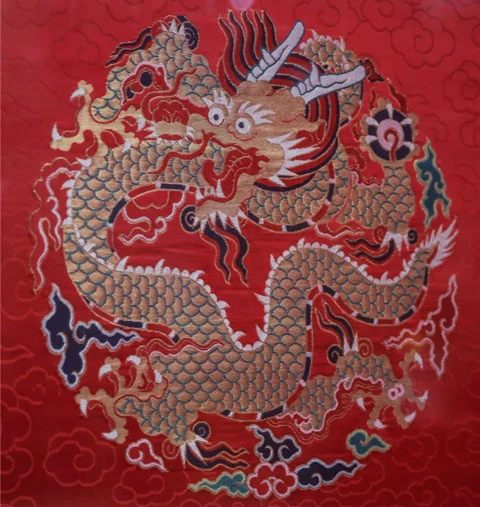
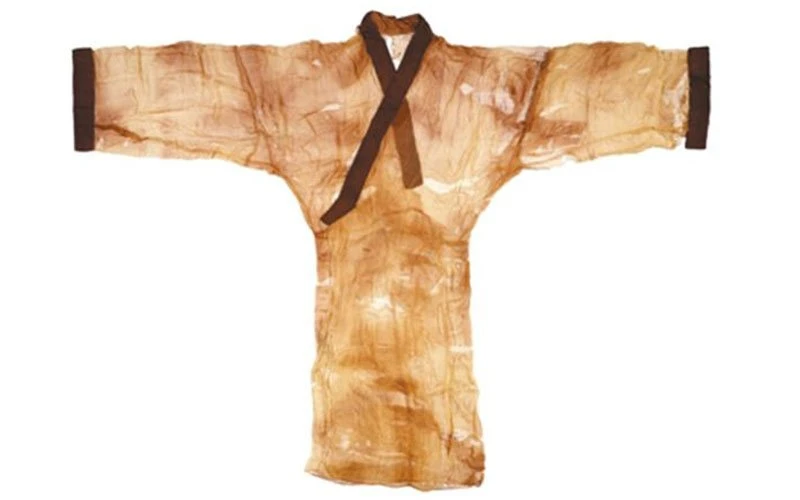
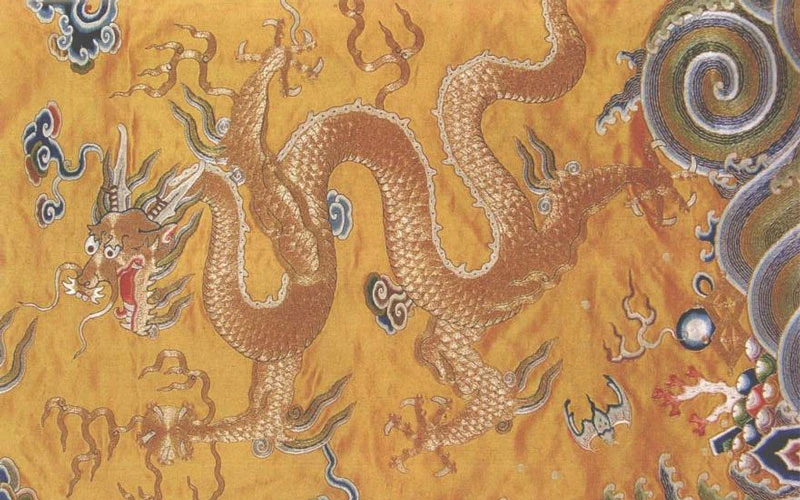

Would really love to have one but... my wallet... 😭
😍😍😍
Such beautiful craft! I hope more young generations can take part ✨
Harus punya bakat untuk menguasainya
Wow sungguh indah